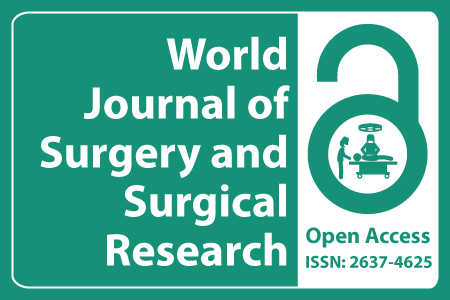
Journal Basic Info
- Impact Factor: 1.989**
- H-Index: 6
- ISSN: 2637-4625
- DOI: 10.25107/2637-4625
Major Scope
- Bariatric Surgery
- Hand Surgery
- Otolaryngology & ENT Surgery
- Cardiothoracic Surgery
- Vascular Surgery
- Oral & Maxillofacial Surgery
- Urological Surgery
- Trauma Surgery
Abstract
Citation: World J Surg Surg Res. 2018;1(1):1059.DOI: 10.25107/2637-4625.1059
Tips in Pancreatic Neuroendocrine Tumors (P-Nets)
Danilo Coco and Silvana Leanza
Department of General Surgery and Surgical Pathology, Augusto Murri Hospital, Italy
Department of Surgery, Carlo Urbani Hospital, Italy
*Correspondance to: Danilo Coco
PDF Full Text Mini Review | Open Access
Abstract:
A neuroendocrine tumor seems to arise from neural and endocrine cells. The most common are carcinoid rumors and neuroendocrine tumors of the pancreas (P-NETs). Most pancreatic tumors are sporadic but they also can arise from genetic syndrome such as MEN 1, MEN 2, VHL syndromes. They account for approximately 1% of pancreatic cancer in a range of age between 30-60 years. They can divide in Functional (F-PNETs) and non Functional tumors (NF-PNETs). Approximately 10% to 20% is functional. Functuctional P-NET may or may not have hormonal syndrome based on the hormone secretion: gastrin, insulin, glucagone, VIP, somatostatin. About 70% are insulinomas, 15% glucagonomas, 10% gastrinomas and somatostatinomas, which have a risk of metastases of 80% to 90%. Very rare is Vipomas, ACTHoma, GRFoma. Non functional PNET may have not any kind of symptoms and they are discovered in advanced stage. Appropriate diagnosis requires multidisciplinary team evaluating biochemical, radiological, endocrinological and surgical findings.
Keywords:
Cite the Article:
Coco D, Leanza S. Tips in Pancreatic Neuroendocrine Tumors (P-Nets). World J Surg Surgical Res. 2018; 1: 1059.













